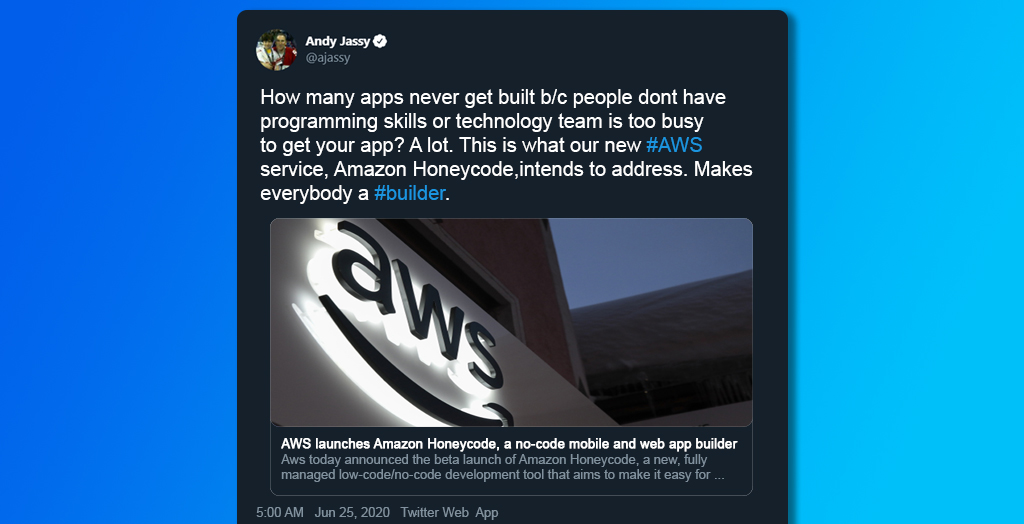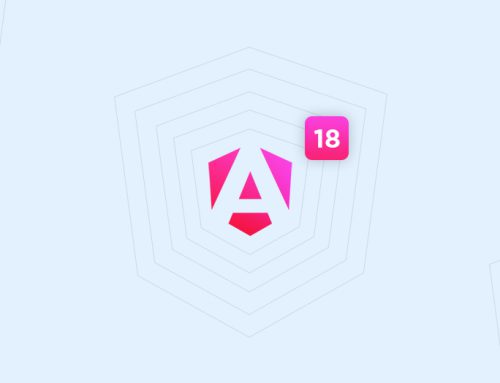Table of Contents
Every business has novel prerequisites such as – managing budgets, organizing events, tracking task progress, etc. To manage these activities effectively, and the handiest tool used by the teams is a spreadsheet, which keeps your data organized, structured, and has a shorter learning curve.
However, the confidentiality and integrity of the data is a real challenge with the spreadsheets, as the same sheet has to be revolved through each team member for updation. There are chances the employee might enter the data in the wrong column or the data wasn’t supposed to be disclosed to him.
The applications prove to be an extremely useful tool here, wrapping all the internal data and processes as well as making the data management more comprehensible. But, building a Custom Application for each department is a burdensome task for the companies, creating larger IT backlogs and increasing the dependency on the IT department.
Honeycode– an Amazon product, is a perfect fit solution for all these issues, combining the power of application and the simplicity of the spreadsheets. The beta version of Honeycode was announced on June 22, 2020, and with this announcement, Amazon has also entered into the no-code/ low code application building queue just like Microsoft and Google.
What is a No-Code Application Builder?
A No-Code Application Builder is a development platform that utilizes a VDE (Visual Development Environment) to develop the applications through drag and drop. The introduction of the concept of no-code app development has extended the limits of the app development process, empowering layman users with no prior technical knowledge, to develop applications without using a single line of code.
The popularity of no-code app builder is increasing, here are some stats that are worth mentioning:
- By 2024, the low-code and no-code app development approaches are expected to represent more than 65% of application development within the companies. – Gartner.
- In the same context, Forrester predicts a growth of 50% per year and more than 21 billion USD by 2024.
There are numerous no-code app builders in the market such as- Airtable, Appy Pie, AppSheet, Salesforce Platform, including Amazon Honeycode – the latest member in the list. To check out the potentials of Honeycode, let’s dive deeper into its feature highlights.
Highlights of Amazon Honeycode
“Honey represents something sweet, enjoyable, and familiar, and by bringing honey and code together, we wanted the service name to convey that building apps are now accessible to business users and that it can even be fun.” – Vaidyanathan, General Manager at AWS.
Being a fully managed no-code application builder, Honeycode allows you to develop a custom application without writing a single line of code. Honeycode is a powerful tool for the non-developer, empowering them to develop the applications at their end as well as diminishing their dependency on the IT department for simple application.
Andy Jassy, CEO of AWS, stated in a tweet:

Along with this, Honeycode also expedites the development process – a prominent factor for a business. Before we go further into discussing the steps to start with Honeycode, let’s take a look at its feature highlights.
- Honeycode is packed with some common application templates such as – Inventory management, Event management, Survey, Team task tracker, Budget approval, To-do list, Content Tracker, Time off reporting, and Field Service Agent. Templates give a pre-built structure to your application, using which you need not start with a plain canvas to build an application, instead, you can use the template and modify it as needed.
- Honeycode enables fast customization, that is, as soon as a change is made to the application, it gets deployed immediately, resulting in faster development. Along with customization, Honeycode also comes with a collection of built-in trigger-driver actions, allowing you to automate your workflow into a well-oiled machine. Just select the desired action from the list and write the condition to trigger it.
- The database of Honeycode looks just like the spreadsheet, however, functions as a database. To use the existing data in your application, all you need to do is simply import it in the Comma Separated Value (CSV) format, or else you can start from scratch as well, as per the requirement.
- Honeycode comes with a rich palette of UI objects such as buttons, text area, list, blank box, Form. To create the user interface of your application, you can drag and drop the objects to your application from the palette and connect with the database.
- Sharing the application built with the Honeycode has been made very easy and is just a matter of a click. The only requirement to execute the shared application is that the mobile device should have the Honeycode Player installed in it. You can also personalize the sharing data as per the receiver, that is, which data should be shared to whom.
- The pricing criteria depend on the number of application users, that is, the smaller application with up to 20 users can be built for free and the larger application that meant for more than 20 users as well as requires more storage space has to pay the charges. There are three pricing plans offered by Honeycode –
-
1. BASIC(Free)
- $0/month
- 2,500 rows/workbook
- Unlimited workbooks
- Includes 20 members
-
2. PLUS
- $19.99/month
- 10,000 rows/workbook
- Unlimited workbooks
- Includes 20 members
- $9.99/month for each additional member
-
3. PRO
- $29.99/month
- 100,000 rows/workbook
- Unlimited workbooks
- Includes 20 members
- $19.99/month for each additional member
- AWS has an extremely active online Amazon Honeycode Community, to support its users through their app development process. Whenever you get stuck with any issue in the Honeycode, you can post the questions on the forum and get the answers. The forum also provides various educational materials, courses, and tutorials related to the Honeycode, which you can go through to learn about its functionality.
Steps to Start with Honeycode
- Create an account on the Honeycode website.
- Then in your Honeycode Drive, create a workbook.
- Select the desired template and modify it or create it from scratch.
- Setup your business data in tables.
- Link data to the application.
- Add personalization to your app, which allows you to restrict the users to your app.
- Use automation on the actions where required.
- Share the app with your team members, who can use it along with you. (Optional).
Wrap-up
Amazon Honeycode is still in its early stages and is currently available only in the US-East (North Virginia) and US-West (Oregon) AWS regions. With a few features introduced in its beta release, users are eagerly looking for some major potentials in the future.
Though the idea of releasing a very basic version of the platform is raising a lot of questions on the product and creating so much curiosity among the users. But to deliver the most appropriate product to the customer, it is best to follow the agile method that allows you to take reviews and feedback from the customers at each development cycle which gives the right direction to the company to head with- that’s how Amazon is working.
Being a non-developer, you can create a small internal application with the no-code/low-code platforms. However, the best approach to create a large scale application is to do it under the supervision of experts or for that matter hand over the complete project to them. For any further assistance regarding such platforms, reach out to us Or Hire the Application Developer and leave the hassle to us.


























Leave A Comment